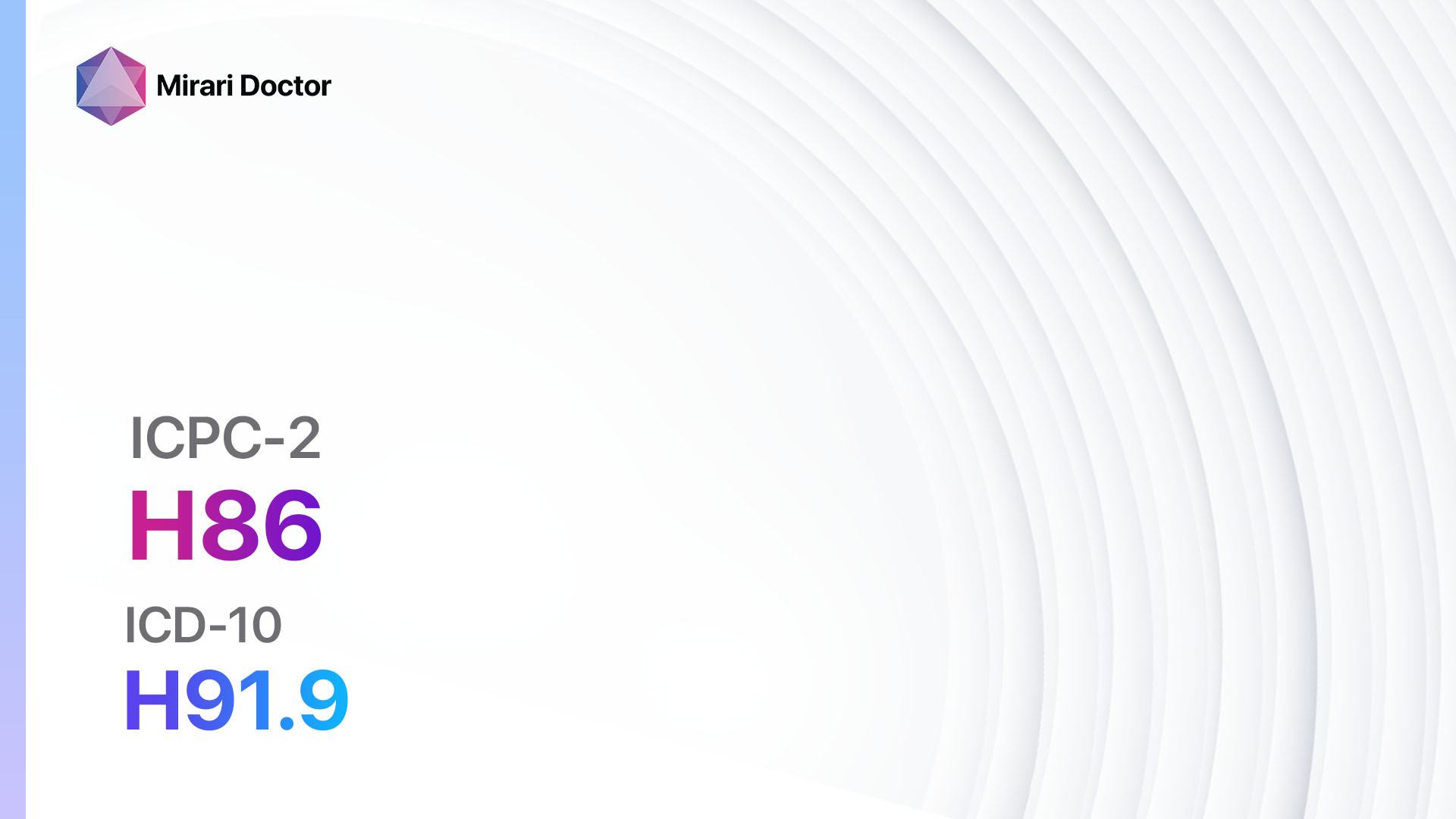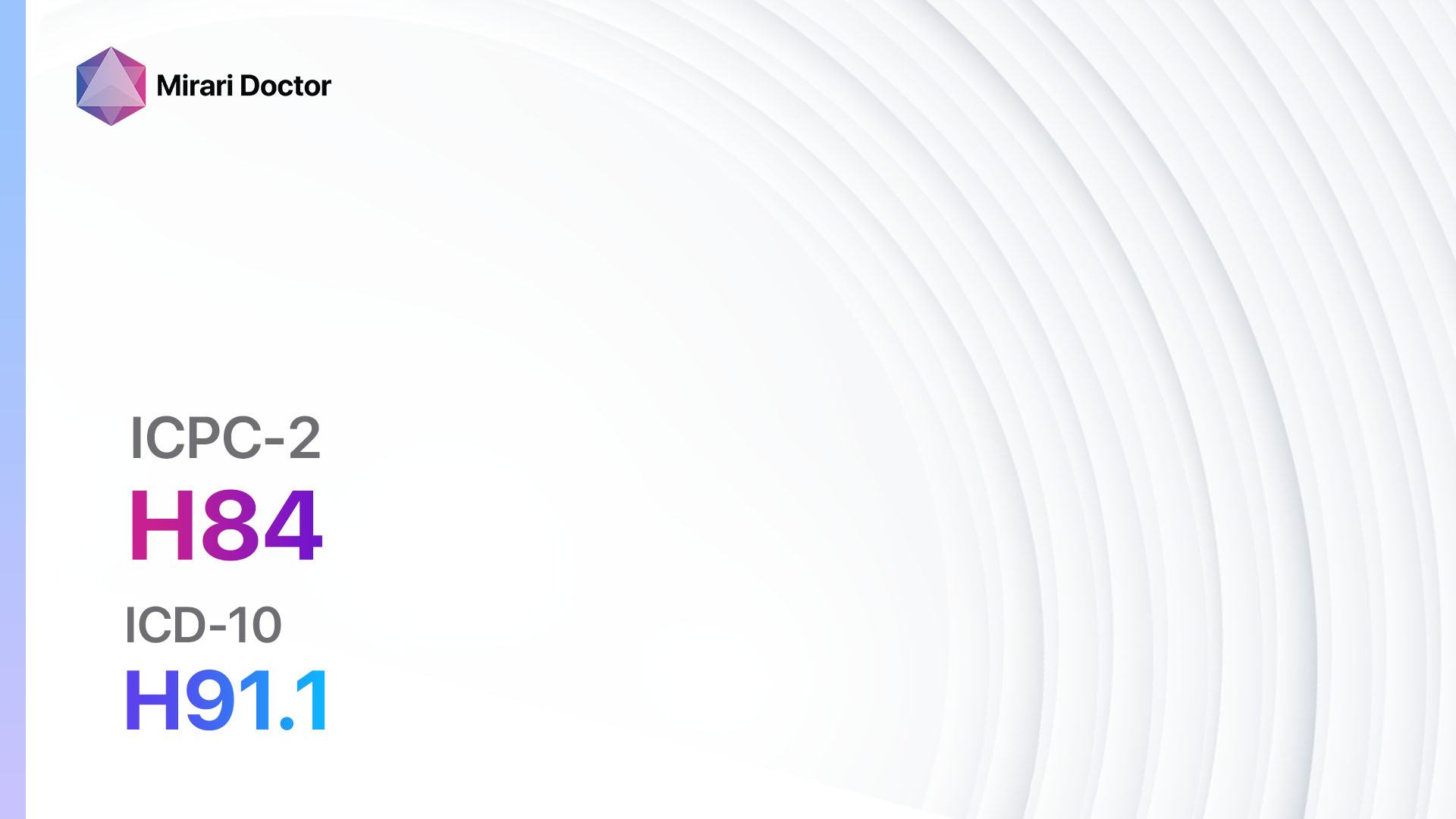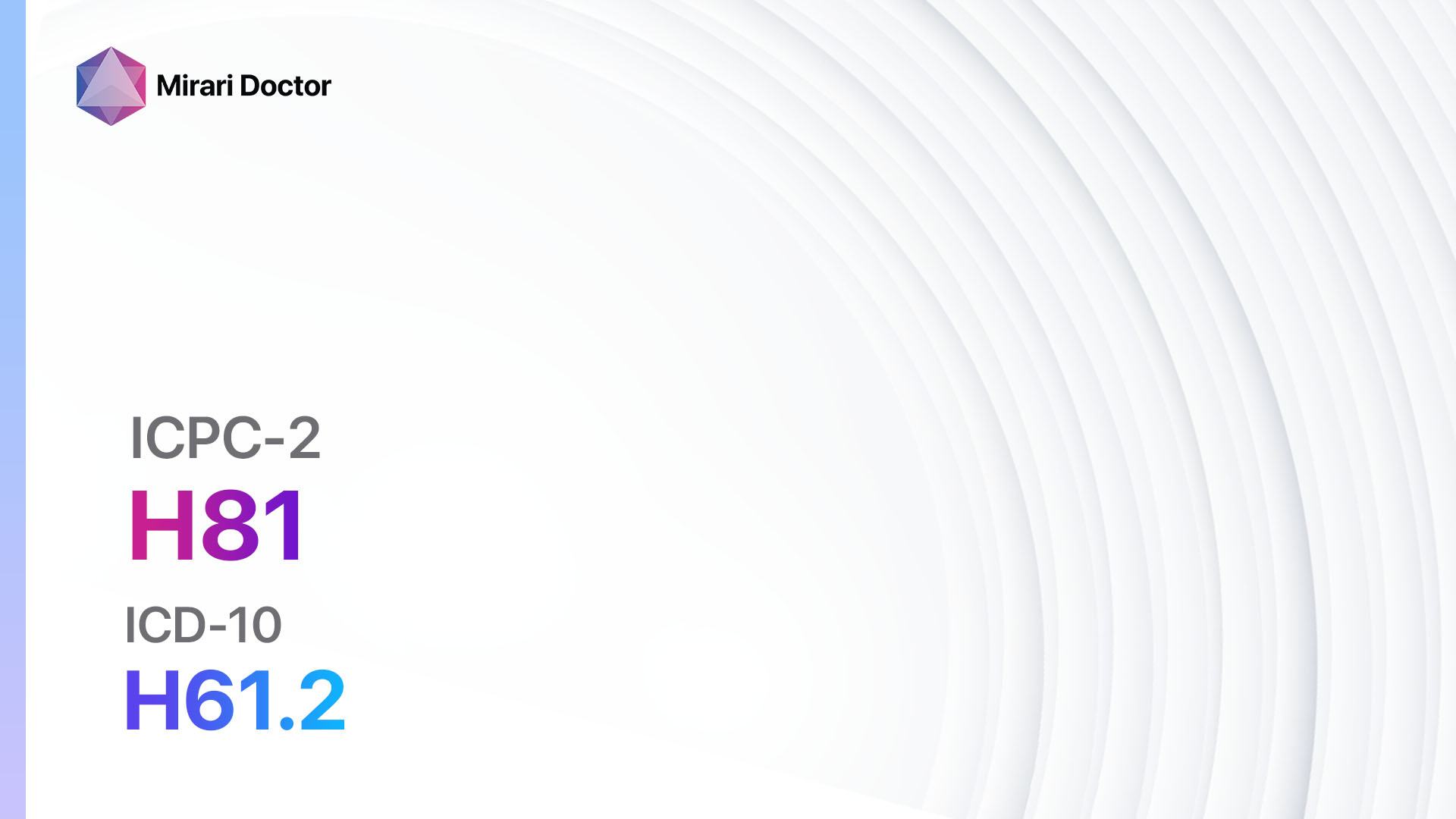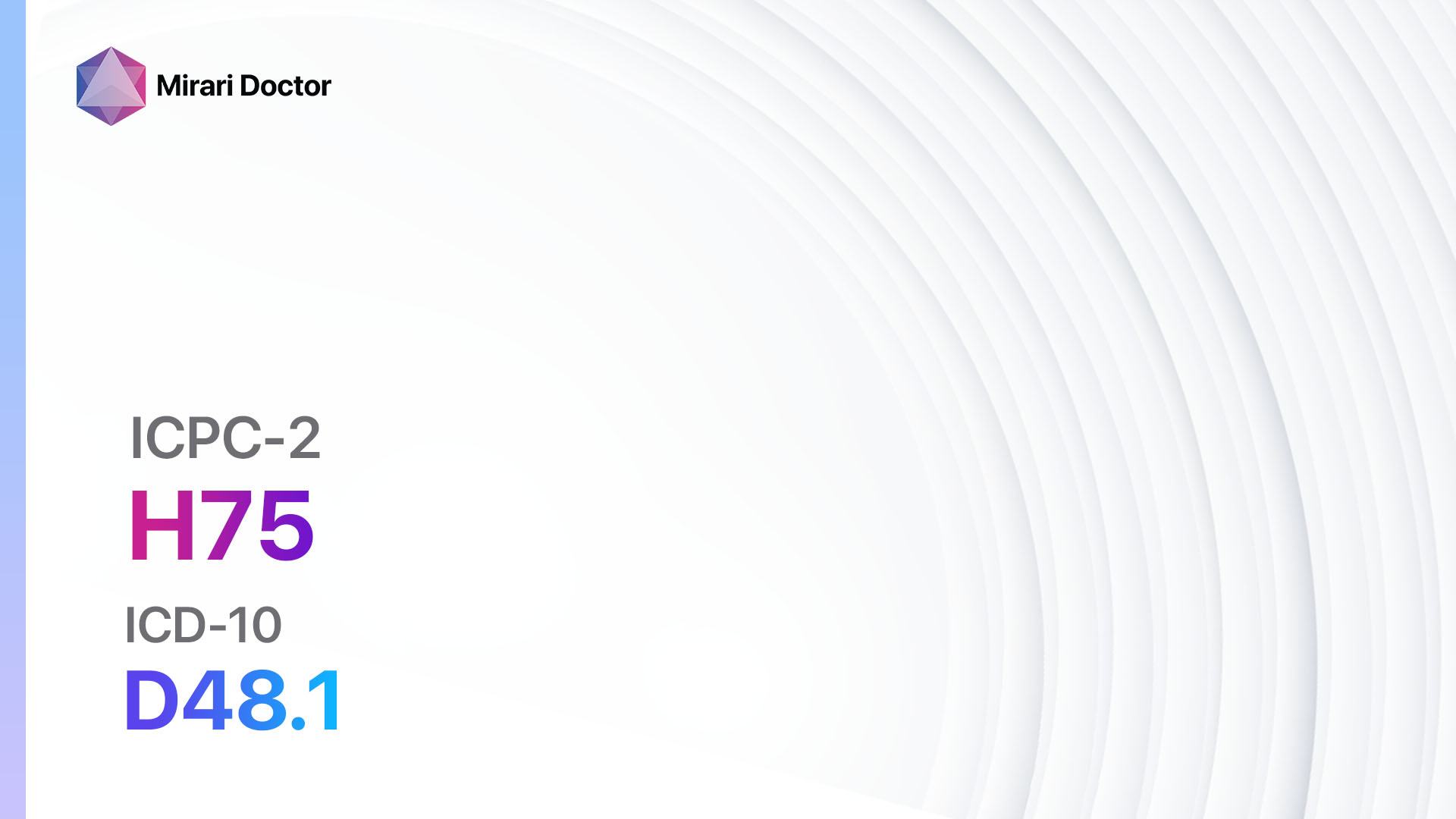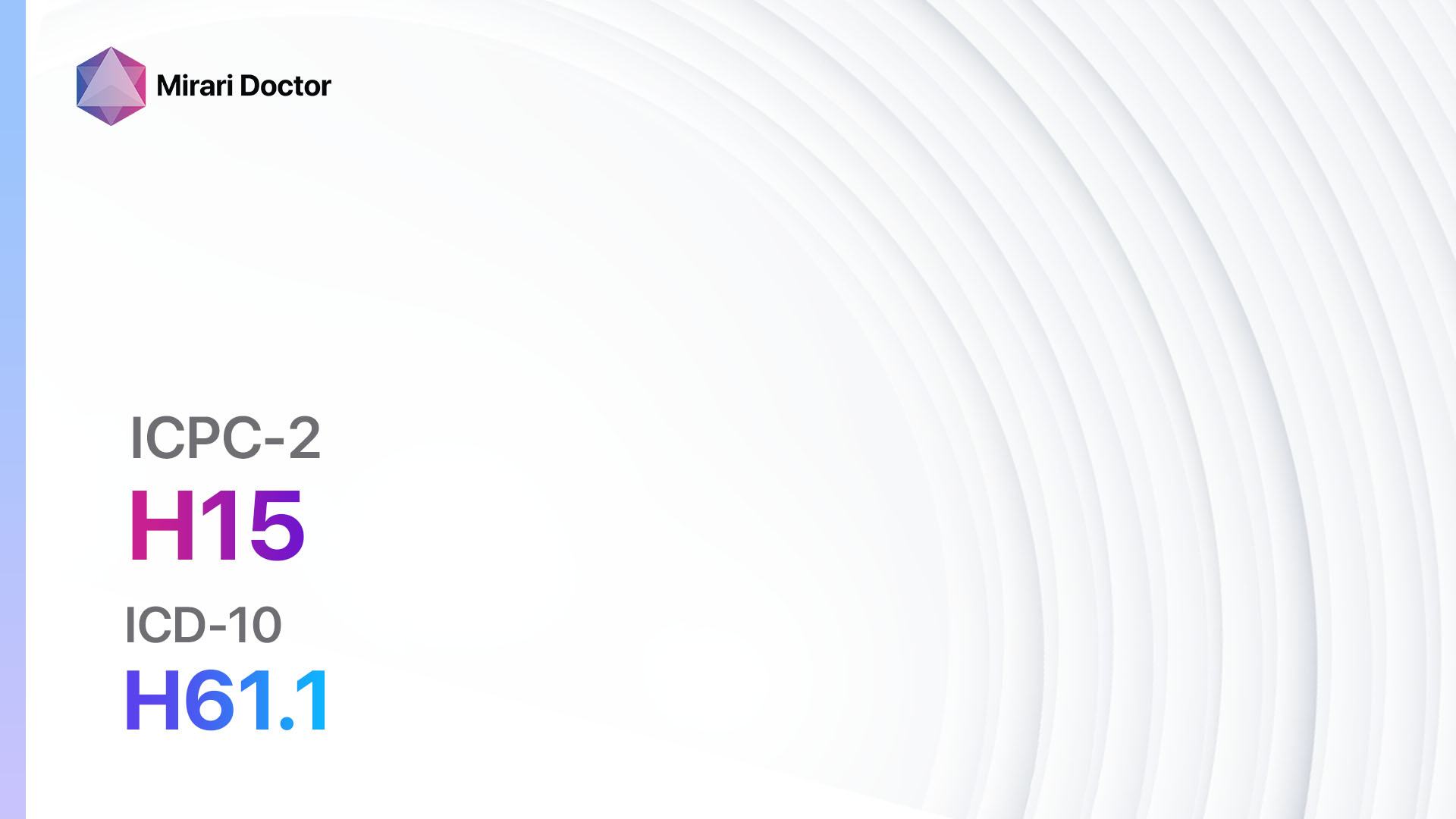
Introduction
Limited function/disability ear refers to a condition where there is a decrease in the normal functioning of the ear, resulting in hearing loss or other impairments. This condition can significantly impact a person’s quality of life and communication abilities[1]. The aim of this guide is to provide an overview of the symptoms, causes, diagnostic steps, possible interventions, and lifestyle interventions for limited function/disability ear.
Codes
- ICPC-2 Code: H28 Limited function/disability ear[2]
- ICD-10 Code: Z73.6 Limitation of activities due to disability[3]
Symptoms
- Hearing loss: Difficulty in hearing sounds or conversations[4].
- Tinnitus: Ringing or buzzing sound in the ear[5].
- Vertigo: Sensation of spinning or dizziness[6].
- Ear pain or discomfort[7].
- Ear drainage or discharge[8].
Causes
- Aging: Age-related hearing loss is a common cause of limited function/disability ear[9].
- Noise exposure: Prolonged exposure to loud noises can damage the structures of the ear[10].
- Ear infections: Chronic or recurrent ear infections can lead to hearing loss.
- Ototoxic medications: Certain medications can damage the inner ear and cause hearing loss.
- Trauma or injury to the ear.
- Genetic factors: Some individuals may be genetically predisposed to hearing loss.
Diagnostic Steps
Medical History
- Gather information about the patient’s symptoms, including the duration and severity.
- Inquire about any previous ear infections, trauma, or exposure to loud noises.
- Ask about any medications the patient is currently taking.
- Assess the patient’s medical history for any conditions that may contribute to limited function/disability ear, such as diabetes or cardiovascular disease.
Physical Examination
- Inspect the external ear for any abnormalities or signs of infection.
- Evaluate the ear canal and eardrum using an otoscope.
- Perform a tuning fork test to assess hearing.
- Check for any signs of balance or coordination issues.
Laboratory Tests
- Audiometry: A hearing test to measure the patient’s ability to hear different frequencies and volumes.
- Tympanometry: Measures the movement of the eardrum in response to changes in air pressure.
- Blood tests: To check for any underlying medical conditions that may contribute to limited function/disability ear.
Diagnostic Imaging
- CT scan or MRI: These imaging modalities can provide detailed images of the structures of the ear and help identify any abnormalities or damage.
Other Tests
- Otoacoustic emissions (OAE) test: Measures the sounds that are produced by the inner ear in response to a stimulus.
- Auditory brainstem response (ABR) test: Evaluates the electrical activity of the auditory nerve and brainstem in response to sound.
Follow-up and Patient Education
- Provide the patient with a clear explanation of the diagnosis and its implications.
- Discuss treatment options and interventions.
- Educate the patient on preventive measures, such as avoiding loud noises and practicing good ear hygiene.
Possible Interventions
Traditional Interventions
Medications:
Top 5 drugs for limited function/disability ear:
- Corticosteroids (e.g., Prednisone, Dexamethasone):
- Cost: Generic versions can range from $5 to $30 for a one-month supply.
- Contraindications: Active infections, systemic fungal infections.
- Side effects: Increased appetite, weight gain, mood changes.
- Severe side effects: Increased risk of infections, osteoporosis.
- Drug interactions: Nonsteroidal anti-inflammatory drugs (NSAIDs), anticoagulants.
- Warning: Prolonged use may require gradual tapering to avoid withdrawal symptoms.
- Antibiotics (e.g., Amoxicillin, Ciprofloxacin):
- Cost: Generic versions can range from $10 to $50 for a one-month supply.
- Contraindications: Allergy to antibiotics, history of tendon disorders.
- Side effects: Upset stomach, diarrhea, rash.
- Severe side effects: Severe allergic reactions, tendon rupture.
- Drug interactions: Antacids, blood thinners.
- Warning: Complete the full course of antibiotics as prescribed.
- Antihistamines (e.g., Loratadine, Cetirizine):
- Cost: Generic versions can range from $5 to $20 for a one-month supply.
- Contraindications: Glaucoma, urinary retention.
- Side effects: Drowsiness, dry mouth, blurred vision.
- Severe side effects: Irregular heartbeat, difficulty urinating.
- Drug interactions: Sedatives, alcohol.
- Warning: Avoid activities requiring mental alertness while taking antihistamines.
- Vasodilators (e.g., Betahistine, Cinnarizine):
- Cost: Generic versions can range from $10 to $30 for a one-month supply.
- Contraindications: Peptic ulcer disease, pheochromocytoma.
- Side effects: Headache, upset stomach, dizziness.
- Severe side effects: Low blood pressure, allergic reactions.
- Drug interactions: Antihypertensive medications, anticoagulants.
- Warning: Use with caution in patients with asthma or low blood pressure.
- Diuretics (e.g., Hydrochlorothiazide, Furosemide):
- Cost: Generic versions can range from $5 to $20 for a one-month supply.
- Contraindications: Anuria, electrolyte imbalance.
- Side effects: Increased urination, electrolyte abnormalities.
- Severe side effects: Dehydration, low blood pressure.
- Drug interactions: Nonsteroidal anti-inflammatory drugs (NSAIDs), lithium.
- Warning: Monitor electrolyte levels regularly.
Alternative Drugs:
- Ginkgo biloba: Herbal supplement that may improve blood flow to the ear. Cost: $10-$30 for a one-month supply.
- Vitamin B12: May help improve nerve function in the ear. Cost: $5-$15 for a one-month supply.
- Magnesium: Some studies suggest that magnesium supplementation may help reduce hearing loss. Cost: $5-$20 for a one-month supply.
- Melatonin: May have antioxidant properties that can protect the ear from damage. Cost: $5-$15 for a one-month supply.
- Acetyl-L-carnitine: May help improve nerve function and reduce hearing loss. Cost: $10-$30 for a one-month supply.
Surgical Procedures:
- Cochlear implant: A device that is surgically implanted to bypass damaged parts of the ear and directly stimulate the auditory nerve. Cost: $50,000 to $100,000.
- Tympanoplasty: Surgical repair of the eardrum or middle ear bones. Cost: $5,000 to $10,000.
- Stapedectomy: Surgical removal of the stapes bone and replacement with a prosthesis to improve hearing. Cost: $10,000 to $20,000.
Alternative Interventions
- Acupuncture: May help improve blood flow and reduce pain. Cost: $60-$120 per session.
- Chiropractic care: Some individuals report improvement in hearing and balance with chiropractic adjustments. Cost: $50-$100 per session.
- Hyperbaric oxygen therapy: Involves breathing pure oxygen in a pressurized chamber to increase oxygen delivery to tissues. Cost: $200-$300 per session.
- Herbal supplements: Some herbs, such as ginkgo biloba and ginger, may have potential benefits for improving circulation and reducing inflammation. Cost: Varies depending on the specific supplement.
- Sound therapy: Using specific frequencies or white noise to stimulate the auditory system and improve hearing. Cost: $100-$200 per session.
Lifestyle Interventions
- Avoiding loud noises: Limit exposure to loud noises and use ear protection when necessary.
- Quitting smoking: Smoking can contribute to hearing loss and other ear-related problems.
- Maintaining a healthy diet: Eating a balanced diet rich in antioxidants and nutrients may help protect the ear.
- Regular exercise: Physical activity can improve blood flow and overall health, which may benefit the ear.
- Stress management: Chronic stress can contribute to hearing loss, so finding healthy ways to manage stress is important.
It is important to note that the cost ranges provided are approximate and may vary depending on the location and availability of the interventions. It is recommended to consult with a healthcare professional for personalized treatment options and cost estimates.
Mirari Cold Plasma Alternative Intervention
Understanding Mirari Cold Plasma
- Safe and Non-Invasive Treatment: Mirari Cold Plasma is a safe and non-invasive treatment option for various skin conditions. It does not require incisions, minimizing the risk of scarring, bleeding, or tissue damage.
- Efficient Extraction of Foreign Bodies: Mirari Cold Plasma facilitates the removal of foreign bodies from the skin by degrading and dissociating organic matter, allowing easier access and extraction.
- Pain Reduction and Comfort: Mirari Cold Plasma has a local analgesic effect, providing pain relief during the treatment, making it more comfortable for the patient.
- Reduced Risk of Infection: Mirari Cold Plasma has antimicrobial properties, effectively killing bacteria and reducing the risk of infection.
- Accelerated Healing and Minimal Scarring: Mirari Cold Plasma stimulates wound healing and tissue regeneration, reducing healing time and minimizing the formation of scars.
Mirari Cold Plasma Prescription
Video instructions for using Mirari Cold Plasma Device – H28 Limited function/disability ear (ICD-10:Z73.6)
| Mild | Moderate | Severe |
| Mode setting: 7 (Immunotherapy) Location: 1 (Sacrum) Morning: 15 minutes, Evening: 15 minutes |
Mode setting: 7 (Immunotherapy) Location: 1 (Sacrum) Morning: 30 minutes, Lunch: 30 minutes, Evening: 30 minutes |
Mode setting: 7 (Immunotherapy) Location: 1 (Sacrum) Morning: 30 minutes, Lunch: 30 minutes, Evening: 30 minutes |
| Mode setting: 7 (Immunotherapy) Location: 4 (Heart, Bile & Pancreas) Morning: 15 minutes, Evening: 15 minutes |
Mode setting: 7 (Immunotherapy) Location: 4 (Heart, Bile & Pancreas) Morning: 30 minutes, Lunch: 30 minutes, Evening: 30 minutes |
Mode setting: 7 (Immunotherapy) Location: 4 (Heart, Bile & Pancreas) Morning: 30 minutes, Lunch: 30 minutes, Evening: 30 minutes |
| Mode setting: 3 (Antiviral Therapy) Location: 0 (Localized) Morning: 15 minutes, Evening: 15 minutes |
Mode setting: 3 (Antiviral Therapy) Location: 0 (Localized) Morning: 30 minutes, Lunch: 30 minutes, Evening: 30 minutes |
Mode setting: 3 (Antiviral Therapy) Location: 0 (Localized) Morning: 30 minutes, Lunch: 30 minutes, Evening: 30 minutes |
| Mode setting: 7 (Immunotherapy) Location: 7 (Neuro system & ENT) Morning: 15 minutes, Evening: 15 minutes |
Mode setting: 7 (Immunotherapy) Location: 7 (Neuro system & ENT) Morning: 30 minutes, Lunch: 30 minutes, Evening: 30 minutes |
Mode setting: 7 (Immunotherapy) Location: 7 (Neuro system & ENT) Morning: 30 minutes, Lunch: 30 minutes, Evening: 30 minutes |
| Total Morning: 60 minutes approx. $10 USD, Evening: 60 minutes approx. $10 USD |
Total Morning: 120 minutes approx. $20 USD, Lunch: 120 minutes approx. $20 USD, Evening: 120 minutes approx. $20 USD, |
Total Morning: 120 minutes approx. $20 USD, Lunch: 120 minutes approx. $20 USD, Evening: 120 minutes approx. $20 USD, |
| Usual treatment for 7-60 days approx. $140 USD – $1200 USD | Usual treatment for 6-8 weeks approx. $2,520 USD – $3,360 USD |
Usual treatment for 3-6 months approx. $5,400 USD – $10,800 USD
|
 |
|
Use the Mirari Cold Plasma device to treat Limited function/disability ear effectively.
WARNING: MIRARI COLD PLASMA IS DESIGNED FOR THE HUMAN BODY WITHOUT ANY ARTIFICIAL OR THIRD PARTY PRODUCTS. USE OF OTHER PRODUCTS IN COMBINATION WITH MIRARI COLD PLASMA MAY CAUSE UNPREDICTABLE EFFECTS, HARM OR INJURY. PLEASE CONSULT A MEDICAL PROFESSIONAL BEFORE COMBINING ANY OTHER PRODUCTS WITH USE OF MIRARI.
Step 1: Cleanse the Skin
- Start by cleaning the affected area of the skin with a gentle cleanser or mild soap and water. Gently pat the area dry with a clean towel.
Step 2: Prepare the Mirari Cold Plasma device
- Ensure that the Mirari Cold Plasma device is fully charged or has fresh batteries as per the manufacturer’s instructions. Make sure the device is clean and in good working condition.
- Switch on the Mirari device using the power button or by following the specific instructions provided with the device.
- Some Mirari devices may have adjustable settings for intensity or treatment duration. Follow the manufacturer’s instructions to select the appropriate settings based on your needs and the recommended guidelines.
Step 3: Apply the Device
- Place the Mirari device in direct contact with the affected area of the skin. Gently glide or hold the device over the skin surface, ensuring even coverage of the area experiencing.
- Slowly move the Mirari device in a circular motion or follow a specific pattern as indicated in the user manual. This helps ensure thorough treatment coverage.
Step 4: Monitor and Assess:
- Keep track of your progress and evaluate the effectiveness of the Mirari device in managing your Limited function/disability ear. If you have any concerns or notice any adverse reactions, consult with your health care professional.
Note
This guide is for informational purposes only and should not replace the advice of a medical professional. Always consult with your healthcare provider or a qualified medical professional for personal advice, diagnosis, or treatment. Do not solely rely on the information presented here for decisions about your health. Use of this information is at your own risk. The authors of this guide, nor any associated entities or platforms, are not responsible for any potential adverse effects or outcomes based on the content.
Mirari Cold Plasma System Disclaimer
- Purpose: The Mirari Cold Plasma System is a Class 2 medical device designed for use by trained healthcare professionals. It is registered for use in Thailand and Vietnam. It is not intended for use outside of these locations.
- Informational Use: The content and information provided with the device are for educational and informational purposes only. They are not a substitute for professional medical advice or care.
- Variable Outcomes: While the device is approved for specific uses, individual outcomes can differ. We do not assert or guarantee specific medical outcomes.
- Consultation: Prior to utilizing the device or making decisions based on its content, it is essential to consult with a Certified Mirari Tele-Therapist and your medical healthcare provider regarding specific protocols.
- Liability: By using this device, users are acknowledging and accepting all potential risks. Neither the manufacturer nor the distributor will be held accountable for any adverse reactions, injuries, or damages stemming from its use.
- Geographical Availability: This device has received approval for designated purposes by the Thai and Vietnam FDA. As of now, outside of Thailand and Vietnam, the Mirari Cold Plasma System is not available for purchase or use.
References
- Cunningham LL, Tucci DL. Hearing Loss in Adults. N Engl J Med. 2017;377(25):2465-2473. doi:10.1056/NEJMra1616601
- ICPC-2 – English. World Organization of Family Doctors. https://ehelse.no/kodeverk/icpc-2e–english-version. Accessed June 19, 2024.
- 2024 ICD-10-CM Diagnosis Code Z73.6. ICD List. https://icdlist.com/icd-10/Z73.6. Accessed June 19, 2024.
- Deafness and hearing loss. World Health Organization. https://www.who.int/news-room/fact-sheets/detail/deafness-and-hearing-loss. Published April 1, 2023. Accessed June 19, 2024.
- Baguley D, McFerran D, Hall D. Tinnitus. Lancet. 2013;382(9904):1600-1607. doi:10.1016/S0140-6736(13)60142-7
- Meniere’s Disease. National Institute on Deafness and Other Communication Disorders. https://www.nidcd.nih.gov/health/menieres-disease. Published May 12, 2017. Accessed June 19, 2024.
- Earache. Mayo Clinic. https://www.mayoclinic.org/symptoms/earache/basics/definition/sym-20050613. Published January 11, 2022. Accessed June 19, 2024.
- Ear discharge. MSD Manual Consumer Version. https://www.msdmanuals.com/home/ear,-nose,-and-throat-disorders/symptoms-of-ear-disorders/ear-discharge. Accessed June 19, 2024.
- Yamasoba T, Lin FR, Someya S, Kashio A, Sakamoto T, Kondo K. Current concepts in age-related hearing loss: epidemiology and mechanistic pathways. Hear Res. 2013;303:30-38. doi:10.1016/j.heares.2013.01.021
- Basner M, Babisch W, Davis A, et al. Auditory and non-auditory effects of noise on health. Lancet. 2014;383(9925):1325-1332. doi:10.1016/S0140-6736(13)61613-X
Related articles
Made in USA



